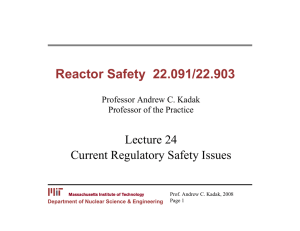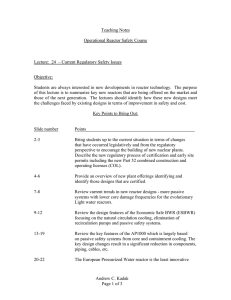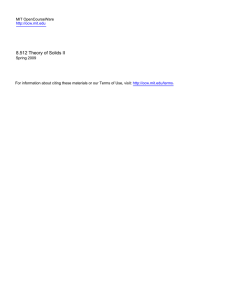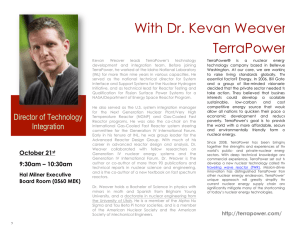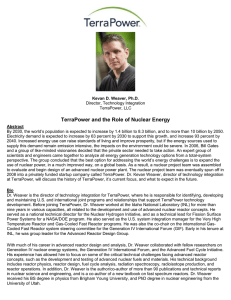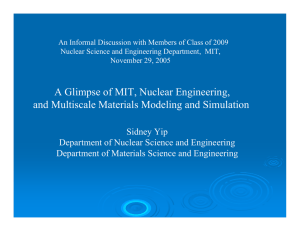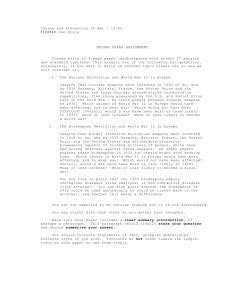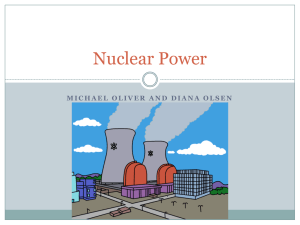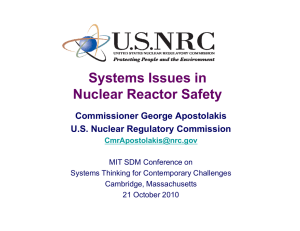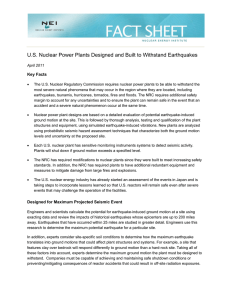Teaching Notes Operational Reactor Safety Course
advertisement
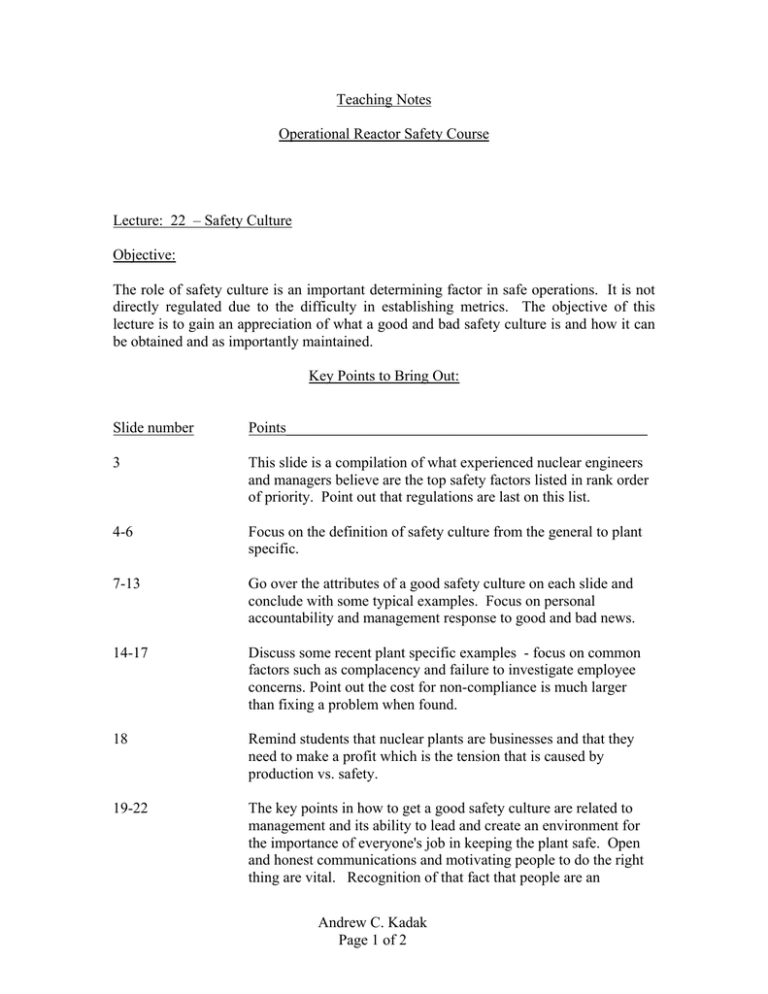
Teaching Notes Operational Reactor Safety Course Lecture: 22 – Safety Culture Objective: The role of safety culture is an important determining factor in safe operations. It is not directly regulated due to the difficulty in establishing metrics. The objective of this lecture is to gain an appreciation of what a good and bad safety culture is and how it can be obtained and as importantly maintained. Key Points to Bring Out: Slide number Points________________________________________________ 3 This slide is a compilation of what experienced nuclear engineers and managers believe are the top safety factors listed in rank order of priority. Point out that regulations are last on this list. 4-6 Focus on the definition of safety culture from the general to plant specific. 7-13 Go over the attributes of a good safety culture on each slide and conclude with some typical examples. Focus on personal accountability and management response to good and bad news. 14-17 Discuss some recent plant specific examples - focus on common factors such as complacency and failure to investigate employee concerns. Point out the cost for non-compliance is much larger than fixing a problem when found. 18 Remind students that nuclear plants are businesses and that they need to make a profit which is the tension that is caused by production vs. safety. 19-22 The key points in how to get a good safety culture are related to management and its ability to lead and create an environment for the importance of everyone's job in keeping the plant safe. Open and honest communications and motivating people to do the right thing are vital. Recognition of that fact that people are an Andrew C. Kadak Page 1 of 2 important part of the safety system and that training of managers and supervisors in leadership skills is essential. 23 Nuclear plants are complex machines - NRC regulations do not ensure safety but the utility and how it operates the plant does. Andrew C. Kadak Page 2 of 2 MIT OpenCourseWare http://ocw.mit.edu 22.091 / 22.903 Nuclear Reactor Safety Spring 2008 For information about citing these materials or our Terms of Use, visit: http://ocw.mit.edu/terms.


